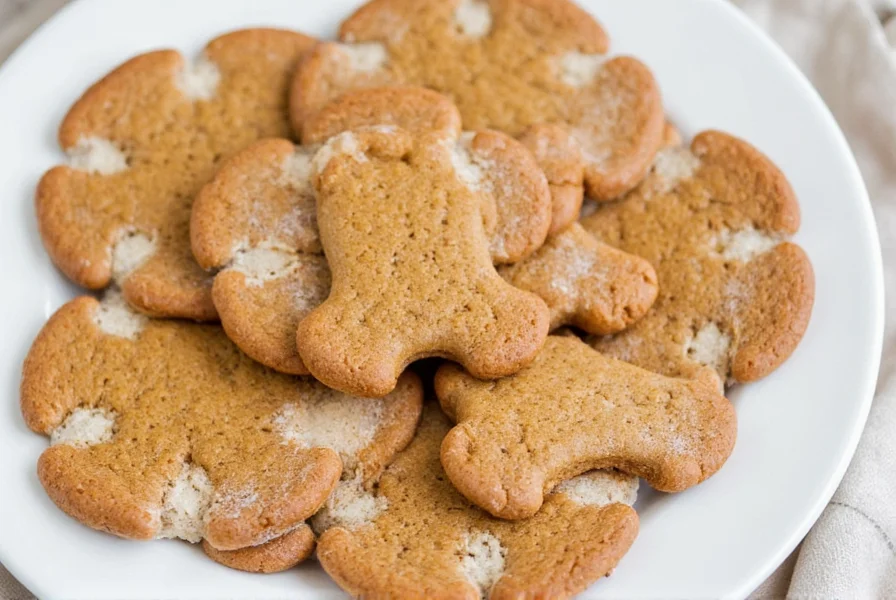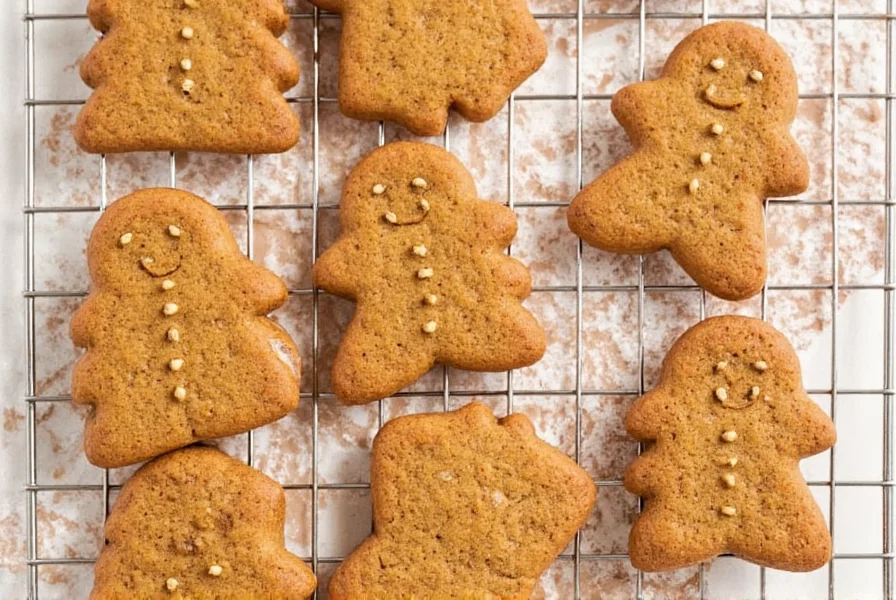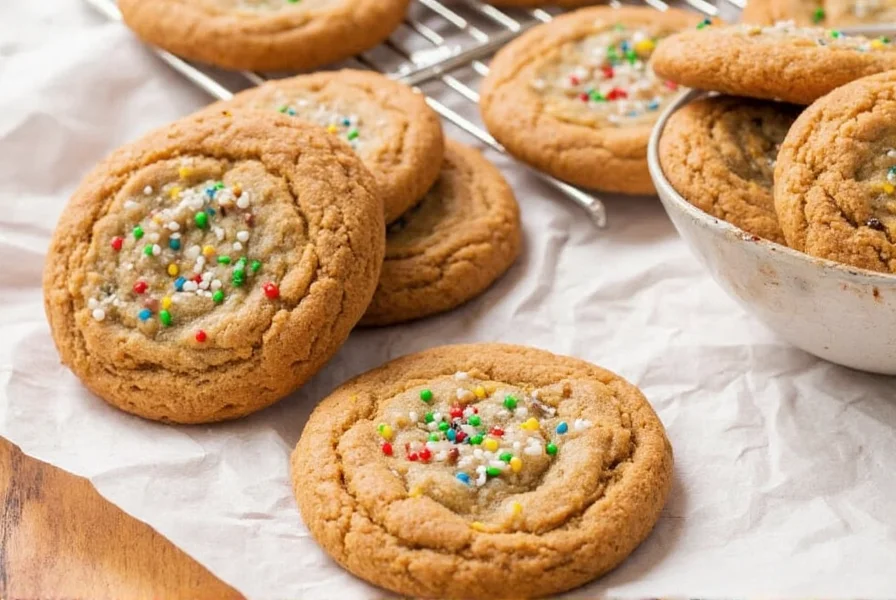For centuries, ginger bread cookies have delighted palates with their distinctive blend of warm spices and comforting sweetness. Originating in 15th century Europe, these spiced treats evolved from simple honey-based cakes to the intricately decorated cookies we know today. Understanding the science behind each ingredient transforms good ginger bread cookies into exceptional ones that maintain their shape while delivering complex flavor.
The Essential Ingredients Breakdown
Molasses quality makes or breaks your ginger bread cookie recipe. Dark molasses provides richer flavor than light varieties, while blackstrap molasses creates an overly bitter taste. Freshly grated ginger adds vibrant heat that powdered ginger can't match, though a combination of both delivers layered spice notes. The secret weapon? A pinch of espresso powder that enhances chocolate notes without making cookies taste coffee-like.
| Ingredient | Function | Substitution Options |
|---|---|---|
| Dark molasses | Provides deep flavor and moisture | Honey (reduced sweetness) |
| Fresh ginger | Delivers bright, spicy notes | 1/4 tsp ground ginger per tbsp fresh |
| Cold unsalted butter | Creates flaky texture | Vegetable shortening (firmer cookies) |
| All-purpose flour | Provides structure | Gluten-free 1:1 blend (slightly crumblier) |
Step-by-Step Perfect Ginger Bread Cookie Method
Begin by creaming room temperature butter with both brown and white sugars until light and fluffy—this incorporates air for proper rise. Whisk dry ingredients separately to evenly distribute spices, then gradually incorporate into wet mixture. The dough should be slightly sticky but hold shape when pressed.
Chilling the dough for at least 2 hours (or up to 72 hours) performs three critical functions: it prevents excessive spreading, allows flavors to meld, and makes handling easier. Professional bakers often use a cookie scoop for uniform sizing, which ensures even baking. Place dough balls at least 2 inches apart on parchment-lined baking sheets.

Avoiding Common Ginger Bread Cookie Mistakes
Overmixing after adding flour develops gluten, creating tough cookies. Underbaking by 30-60 seconds yields softer centers, while overbaking produces brittle results. Many home bakers fail to rotate baking sheets midway through cooking, causing uneven browning. An oven thermometer verifies actual temperature since most ovens run hot or cold.
For crisp-edged cookies, bake immediately after scooping. For chewier centers, freeze dough balls for 15 minutes before baking. The ideal moment to remove cookies from oven? When edges appear set but centers still look slightly underdone—they'll continue cooking on the hot baking sheet.
Creative Variations Worth Trying
Elevate traditional ginger bread cookies with these professional touches: roll dough balls in coarse sugar before baking for sparkling crunch, or add 1/4 cup finely chopped crystallized ginger for intense bursts of spice. For holiday occasions, sandwich cooled cookies with vanilla buttercream or dip half in melted dark chocolate.
International variations offer exciting twists: German Lebkuchen incorporates honey and nuts, while Swedish pepparkakor features additional cardamom. For gluten-free ginger bread cookies, substitute 1:1 gluten-free flour blend and add 1/2 teaspoon xanthan gum to prevent crumbliness.

Proper Storage for Maximum Freshness
Store cooled ginger bread cookies in airtight containers at room temperature for up to 2 weeks. Place parchment between layers to prevent sticking. For longer storage, freeze baked cookies for up to 3 months—thaw at room temperature while covered to prevent condensation.
Revive stale cookies by placing a slice of bread in the container overnight; the cookies will absorb moisture from the bread. Never refrigerate ginger bread cookies as the cold environment accelerates staling through starch retrogradation.
Frequently Asked Questions
Why do my ginger bread cookies spread too much during baking?
Excessive spreading typically occurs when butter is too warm or dough hasn't been properly chilled. Ensure butter is at cool room temperature (65-70°F), not soft or melted. Always chill dough for minimum 2 hours before baking. Using a higher ratio of brown sugar to white sugar also increases spread—try reducing brown sugar by 2 tablespoons for thicker cookies.
Can I make ginger bread cookies without molasses?
While molasses provides signature flavor, you can substitute with 3/4 cup honey plus 1/4 cup dark corn syrup for similar texture. Note that flavor profile will differ significantly—molasses contains compounds created during sugar cane processing that give ginger bread cookies their distinctive taste. For closest approximation, use dark honey like buckwheat honey.
How do I prevent my ginger bread cookies from becoming too hard?
Overbaking is the primary cause of hard ginger bread cookies. Remove them from oven when edges are set but centers still appear slightly underdone—they'll firm up as they cool. Using more brown sugar than white sugar increases moisture retention. Adding 1-2 tablespoons of corn syrup to the dough also helps maintain softness. Proper storage in airtight containers with a slice of bread prevents drying.
What's the difference between ginger bread cookies and ginger snaps?
Ginger snaps contain more sugar and less flour, creating a crisp texture throughout. Traditional ginger bread cookies have higher flour-to-sugar ratio, yielding soft centers with slightly crisp edges. Ginger snaps typically use more white sugar for crispness, while ginger bread cookies rely on molasses for chewiness. Baking time differs too—snaps bake longer (10-12 minutes) for full crispness.
Can I freeze ginger bread cookie dough successfully?
Absolutely—freezing dough actually improves texture. Portion dough into balls, freeze solid on baking sheet, then transfer to freezer bags. Frozen dough bakes beautifully straight from freezer—add 1-2 minutes to baking time. Dough maintains quality for 3 months frozen. Thawing before baking causes excessive spreading.











 浙公网安备
33010002000092号
浙公网安备
33010002000092号 浙B2-20120091-4
浙B2-20120091-4